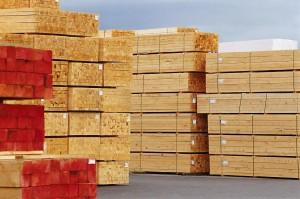3D bioprinting has been all over the news lately. From 3D printed liver tissue, to 3D printed hip implants, the technology is progressing in a exponential fashion. NASA is even trying to get involved in the revolution.
 Lynn Rothschild, and her Ph.D. student Diana Gentry are working on something which could prove to be extremely useful in space, 3D printed trees. Both researchers are from Stanford University, and have biology backgrounds. Rothschild has been a major influencing figure in helping to bring synthetic biology to NASA. Together, they are looking to use a method of 3D bioprinting to culture cells which will excrete non-living material. An example of this is wood, or even meat. Rothschild and Gentry are specifically working with NASA to figure out how to generate wood in space.
Lynn Rothschild, and her Ph.D. student Diana Gentry are working on something which could prove to be extremely useful in space, 3D printed trees. Both researchers are from Stanford University, and have biology backgrounds. Rothschild has been a major influencing figure in helping to bring synthetic biology to NASA. Together, they are looking to use a method of 3D bioprinting to culture cells which will excrete non-living material. An example of this is wood, or even meat. Rothschild and Gentry are specifically working with NASA to figure out how to generate wood in space.
Last fall, the researchers received $100,000 in funding from NASA’s Innovative Advanced Concept Program, and if all goes as planned, they hope to have a proof of concept by late this year. So how exactly will their 3D bioprinting process work? Basically the printer will spit out layers of living cells in a specific pattern. The cells will be extruded from the printer, in a gel solution, onto a growth plate of sorts. The cells then are signaled chemically to excrete a specific material. In this case it is wood. The product of the print would be no different than a freshly cut down tree. Rothschild explained the process a little bit further,
“Cells produce an enormous array of products on the Earth, everything from wool to silk to rubber to cellulose, you name it, not to mention meat and plant products and the things that we eat. Many of these things are excreted. So you’re not going to take a cow or a sheep or a probably not a silk worm or a tree to Mars. But you might want to have a very fine veneer of either silk or wood. So instead of taking the whole organism and trying to make something, why couldn’t you do this all in a very precise way – which actually may be a better way to do it on Earth as well – so that you’re printing an array of cells that then can secrete or produce these products?”
The benefits of this technology to NASA would be that astronauts would not need to bring heavy, large pieces of wood up to space. They could bring, much lighter, smaller materials up there, and then print out the cells,  which will excrete the wood they need for whatever projects is being worked on.
which will excrete the wood they need for whatever projects is being worked on.
The technology would certainly be valuable as well here on Earth. The positive impacts to the environment and nature would be staggering. Imagine being able to print out your own steak, saving millions of animals annually from butchering, or print out your own 2X4’s at the hardware store instead of cutting down a tree.
The methods that are being researched by Rothschild and Gentry could also eventually lead to new composite materials such as carbon fiber reinforced wood, or wood that conducts electricity. There are obstacles to get past before such a technology will be viable, but these researchers, as well as many others around the globe, are well on their way to advancing many new types of 3D bioprinting.
Discuss this research with other 3D printing enthusiasts here: https://3dprintboard.com/showthread.php?1699-NASA-Close-to-Being-Able-to-3D-Print-Trees
Subscribe to Our Email Newsletter
Stay up-to-date on all the latest news from the 3D printing industry and receive information and offers from third party vendors.
You May Also Like
US Army Corps of Engineers Taps Lincoln Electric & Eaton for Largest 3D Printed US Civil Works Part
The Soo Locks sit on the US-Canadian border, enabling maritime travel between Lake Superior and Lake Huron, from which ships can reach the rest of the Great Lakes. Crafts carrying...
Construction 3D Printing CEO Reflects on Being Female in Construction
Natalie Wadley, CEO of ChangeMaker3D, could hear the words of her daughter sitting next to her resounding in her head. “Mum, MUM, you’ve won!” Wadley had just won the prestigious...
Blue Laser-powered M600 3D Printer Launched by Meltio
Founded in 2019 as a joint venture between Additec and Sicnova, metal 3D printer OEM Meltio develops and manufactures high-performance and easy-to-use metal 3D printing solutions that use its patented wire-laser metal...
3D Printed Storage Tanks Cut Material Costs by 25%
In a previous article, “Concrete Dreams: Let’s Print Money, Not Houses,” we discussed how the spotlight on 3D printing homes might be misplaced. Bollards, pedestrian bridges, and concrete tanks could...





























